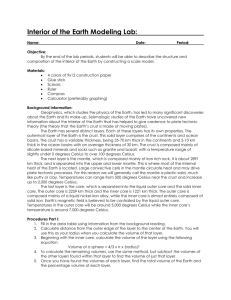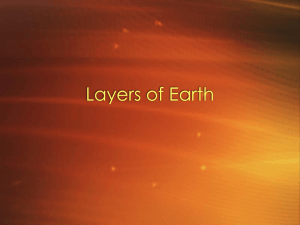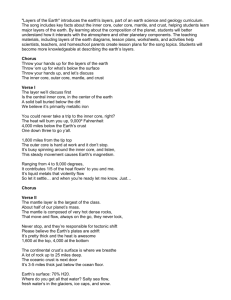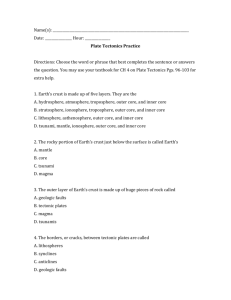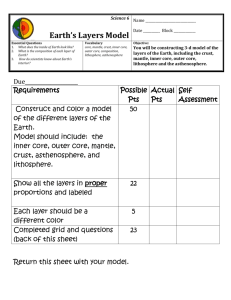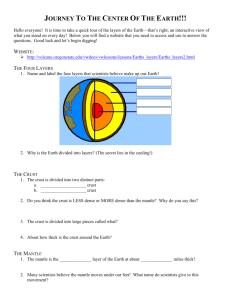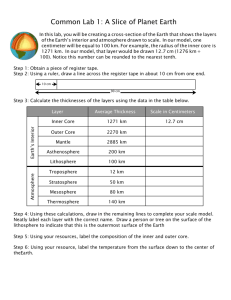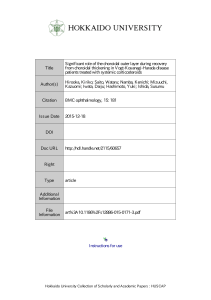File
advertisement
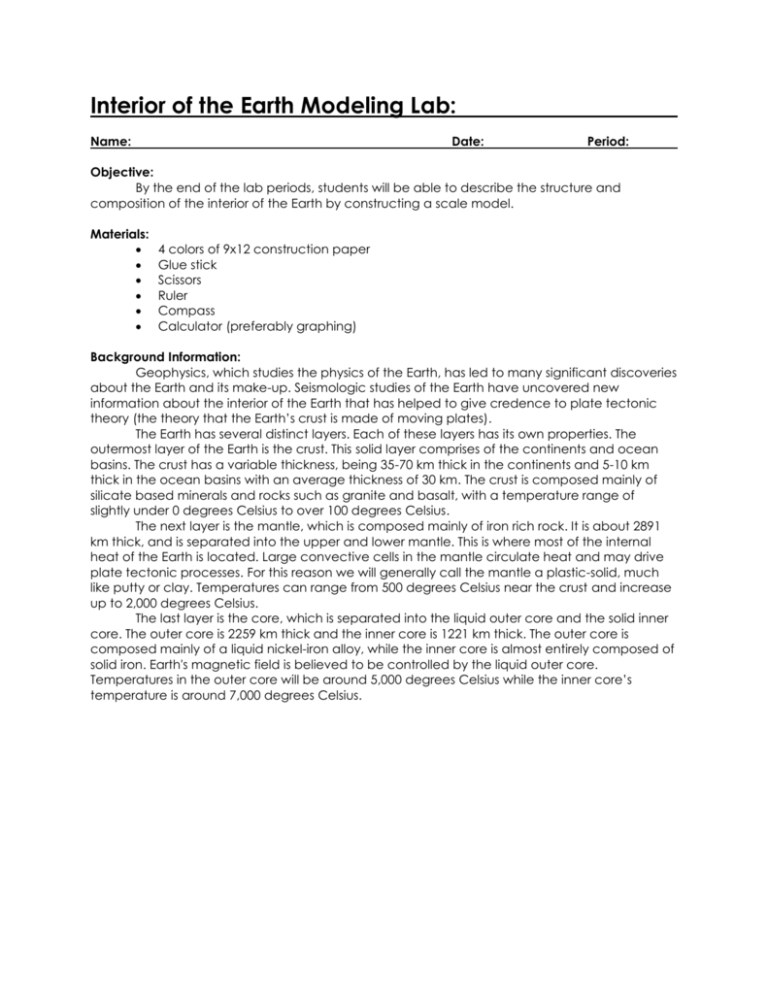
Interior of the Earth Modeling Lab: Name: Date: Period: Objective: By the end of the lab periods, students will be able to describe the structure and composition of the interior of the Earth by constructing a scale model. Materials: 4 colors of 9x12 construction paper Glue stick Scissors Ruler Compass Calculator (preferably graphing) Background Information: Geophysics, which studies the physics of the Earth, has led to many significant discoveries about the Earth and its make-up. Seismologic studies of the Earth have uncovered new information about the interior of the Earth that has helped to give credence to plate tectonic theory (the theory that the Earth’s crust is made of moving plates). The Earth has several distinct layers. Each of these layers has its own properties. The outermost layer of the Earth is the crust. This solid layer comprises of the continents and ocean basins. The crust has a variable thickness, being 35-70 km thick in the continents and 5-10 km thick in the ocean basins with an average thickness of 30 km. The crust is composed mainly of silicate based minerals and rocks such as granite and basalt, with a temperature range of slightly under 0 degrees Celsius to over 100 degrees Celsius. The next layer is the mantle, which is composed mainly of iron rich rock. It is about 2891 km thick, and is separated into the upper and lower mantle. This is where most of the internal heat of the Earth is located. Large convective cells in the mantle circulate heat and may drive plate tectonic processes. For this reason we will generally call the mantle a plastic-solid, much like putty or clay. Temperatures can range from 500 degrees Celsius near the crust and increase up to 2,000 degrees Celsius. The last layer is the core, which is separated into the liquid outer core and the solid inner core. The outer core is 2259 km thick and the inner core is 1221 km thick. The outer core is composed mainly of a liquid nickel-iron alloy, while the inner core is almost entirely composed of solid iron. Earth's magnetic field is believed to be controlled by the liquid outer core. Temperatures in the outer core will be around 5,000 degrees Celsius while the inner core’s temperature is around 7,000 degrees Celsius. Procedures Part I: 1. Fill in the data table using information from the background reading. 2. To determine the distance to center, begin at the inner core where the thickness is equal to the radius. To calculate the radius from the center of Earth to the outer edge of each of the remaining layers, add its thickness to the thickness of all the layers below it. Data Table: Layer Thickness (km) Distance to Center (radius) Temperature Range Density (g/cc) Composition Crust 2.7-3.3 Mantle 3.3-5.7 Outer Core 9.9-12.2 Inner Core 12.6-13.0 Procedures Part II: 1. Pair off inside your group. 2. You are going to create a scale model of the layers of the Earth using the Distance to Center Radius you calculated and the scale of 1cm = 600km. 3. Determine how many centimeters in radius the inner core would be. Then using a ruler, stretch out your compass to reflect that number of centimeters. 4. On one of the pieces of construction paper, draw a circle with the scaled radius and cut out. (inner core – red, outer core – orange, inner core – yellow, crust – white) 5. Repeat for the other three layers. 6. Stack them on top of each other so they look like a bullseye and have your teacher check them before you glue. Label each layer and put your names on the back. Analysis Questions: 1. Describe the density and temperature trends inside the Earth: 2. Why do you think that the outer core is a liquid, while the hotter inner core is a solid?:
